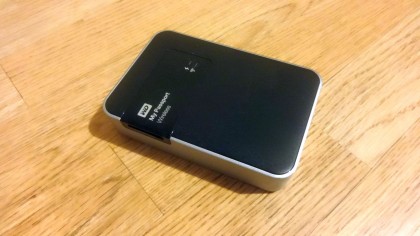How to reclaim 5 missing features on the Galaxy S6
Combining the best of form and function

Since Samsung launched its Galaxy S6 and Galaxy S6 Edge flagships, users have bemoaned the company's decision to remove advance features like a memory card slot, removable battery and waterproofing.
In addition to the three features above that did not make the cut in the transition from last year's Galaxy S5 to this year's Galaxy S6, Samsung also dropped support for USB on-the-go (USB OTG) and MHL. The former feature allows business users to access USB flash drives and connect peripherals like keyboards and mice to their phones for enhanced productivity on the go, while the latter allows the phone to connect to an external display or projector.
Even though these features may be gone on the Galaxy S6, you can still regain expandable storage, add battery power, take the Galaxy S6 for a swim, project your display and expand your productivity with these simple solutions:
1. Reclaim your storage
Just because Samsung ditched the microSD card on the Galaxy S6, you don't need to buy the costly edition with 128GB of storage built-in.
A convenient way to access, store and save files is the cloud. With cloud solutions - such as Google Drive, Microsoft OneDrive, Dropbox and Box - users will always have access to their documents, photos and videos wherever they have access to the internet. If you like to document your workflow through photos, most of these services include automatic photo backup over Wi-Fi or 3G/4G.
For local storage solutions, wireless drives are a great option. You won't have to worry about the cloud being hacked, and even in the basement of your office building where no wireless signal can penetrate, you'll still be able to access your most important documents or treasured photos.
Essentially, a wireless drive creates an ad-hoc wireless network and transforms itself to a battery-powered, portable media streamer.
Sign up to the TechRadar Pro newsletter to get all the top news, opinion, features and guidance your business needs to succeed!

Examples of wireless drive include 32GB SanDisk Connect Wireless Media Drive ($80, £65, AU$103), the 16GB SanDisk Connect Wireless Flash Drive ($50, £40, AU$65), the 500GB Seagate Wireless Mobile Storage ($100, £67, AU$128) and the 2TB Western Digital Wireless MyPassport Drive ($200, £133, AU$257).

With the SanDisk Connect Wireless Media Drive, you even expand the built-in memory of the drive with an SD card. For high capacity, you can even use SanDisk's 200GB capacity microSD card, with adapter, to the media drive. That's more than six times the capacity of the 32GB Galaxy S6 on the memory card alone.
Best of all, you can add and swap multiple memory cards to grow your storage needs on a wireless media drive.
Using a wireless drive means you'll have to charge the battery on your Galaxy S6 or S6 Edge every night, and also the battery on your media streaming device. For the added effort, however, if you carry multiple devices, you'll be able to simultaneously share and access the contents on the wireless drive with a phone, tablet and laptop.
Road warriors can meet in a hotel conference room and they will all be able to access the files on the drive. Many of these drives can stream content to a maximum of ten devices simultaneously. This means I can listen to stored music, my colleagues can watch a video file, while an editor at TechRadar can view photos and other documents on the drive at the same time.